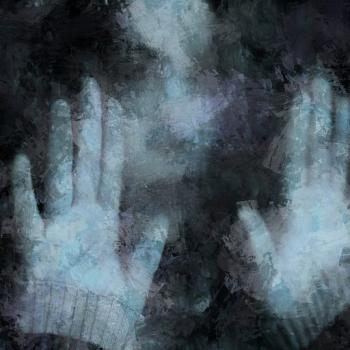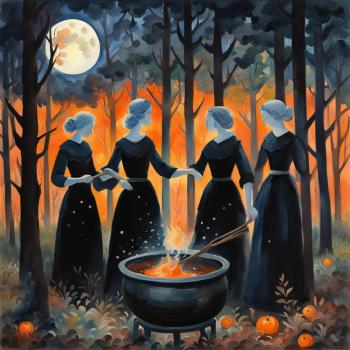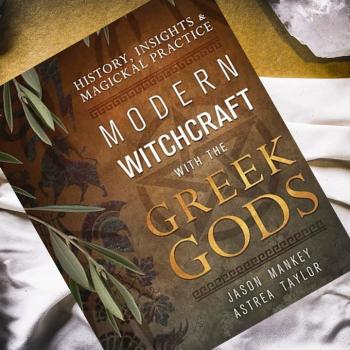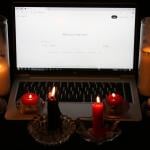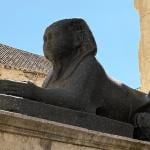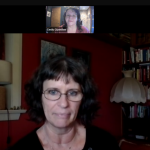This month I thought it would be fun and a bit different to do a random question and answer on social media. I asked people to give me their questions and said I would answer them here on my Patheos blog. I like the idea of this because it lets people touch on subjects I might otherwise not think to discuss.
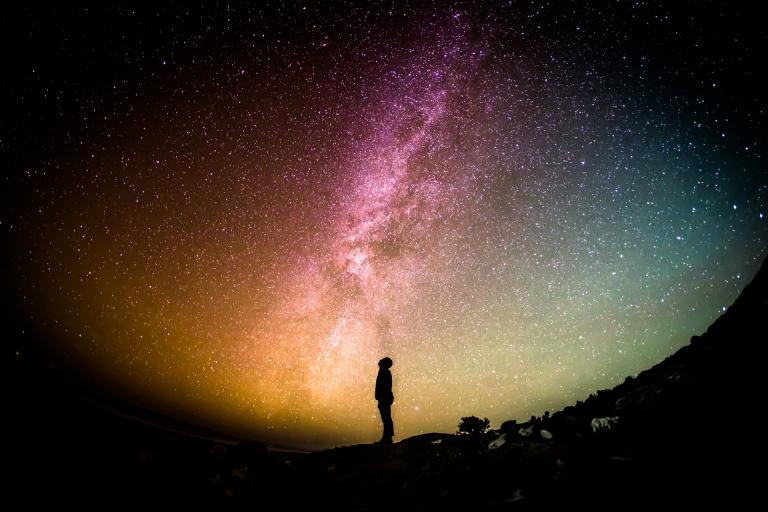
Rebecca asks: “What are some sources for the Otherworld’s relationship with stars? Mostly alluding to your work with the Pleiades and what prompted the change.”
My answer: For those who aren’t familiar this is referencing work I’ve been doing over the last year relating to the Pleiades constellation and creating a ritual cycle around it. There aren’t any direct references as far as I know connecting the Otherworld or the Othercrowd to the stars or specific constellations although we do have a few anecdotal accounts and comments which hint at such connections. Like a comment by someone being interviewed in the early 20th century in the Fairy Faith in Celtic Countries who talked about his belief that the Gentry came from the stars or a reference in the story of Selena Moor to the fairy folk as star worshippers. There are some neolithic monuments that have stellar alignments and we do know certain stars and constellations were important religiously, but most of my current interest in the subject is rooted in personal gnosis and shared gnosis.
What prompted my own change in focus from the usual neopagan solar-lunar focus to a stellar one was a profound experience I had in Iceland last year around the autumn equinox, which was shared with several other people. I’m working on a new holy day system purely from that place of personal experience and a belief that that constellation and dates aligned with it were and are significant in some ways to alignments with the Otherworld.

Meron asks: “Apart from the twee cutesy Disney-style fantasy… what is another cliché about the fae in fiction you wish wasn’t a thing? (you can name more than one cliché, sure)”
My answer: Probably the biggest current cliché that bothers me and I wish wasn’t a thing is the prevalent idea found in fiction and creeping into some pagan works that the unseelie court or particular fairy beings historically known to prey on humans are actually misunderstood ‘good guys’. It’s basically a trope now especially in young adult fantasy and also in television but I’ve also seen it in some books by pagan authors, and it gives the impression that the fairy in question doesn’t really want to hurt humans and just needs the right human to be their friend to help them change.
The reality is that there are plenty of beings in folklore that see humans as a food source or simply inconsequential and like a hungry bear or tornado will harm a human because the human is there, hugs and sympathy notwithstanding.

Becky asks: “What will your next book be about?”
My answer: The next book I have being published is Pagan Portals Fairy Queens which is out the beginning of October 2019, with two more books set to be published early next year. The next book I am writing is an installment in my fiction series, book 8, although I do also have a contract for a Pagan Portals book on Lugh with Moon Books that I will be working on soon as well.
Derek asks: “Would you ever do a book about Valkyries?”
My answer: Possibly, but its not on the current agenda. As I mentioned in the previous answer I’m working on a fiction piece right now and have a contract for a pagan portals on Lugh. I also am under contract for another book on the Morrigan and am seriously considering doing one on the Otherworlds. So I’d have to get through all of that before I considered anything about the Valkyries.
Robert asked about my approach to research and citation methodology.
My answer: I use the American Psychological Association (APA) citation format by preference. I learned APA when I was getting my degree and I have always liked it because it provides the basic citation information as you are reading, rather than making you stop to check a footnote or endnote to see who a source was. Of course not everyone likes this method, but since there’s no standard within pagan writing I’m free to use what I prefer so I do.
My research method is pretty straightforward I think. I look at sources that I think are pertinent to a subject and either paraphrase or quote relevant sections, citing the source as I go. If I’m giving my own opinion or my own understanding of material then I don’t cite any sources of course. I also always try to be very clear in differentiating between my opinion, facts, and things coming from other sources.
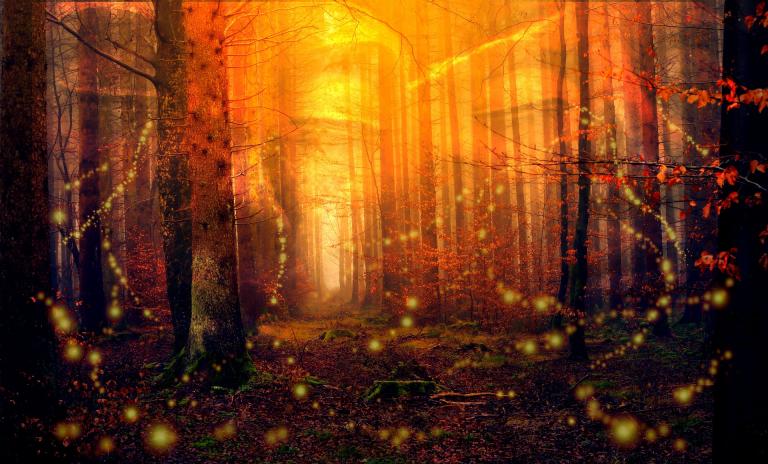
R.M. asks: “What are the best portrayals of faeries in media?”
My answer: My personal opinion here of course, but if we’re talking television and movies then I’d probably say that Jonathan Strange and Mr. Norrell did a great job of portraying fairies in a way that is accurate to folklore. I also really liked the movie The Hallow, although it leans a bit into horror. And movies like the Secret of Roan Inish or even Labyrinth are very good. Books I’d say any of Terry Pratchett’s work like Lords and Ladies, Ruth Francis Long‘s Dubh Linn series, or Peadar Ò Guilín‘s ‘The Call’ are very good.
I realize things like Lost Girl and Carnival Row are immensely popular but honestly I didn’t like them as much as everyone else seemed to, in part because of the way the folklore was treated and also because the fairies in them are generally just humans in fancy dress rather than inhuman beings who happen to look somewhat human in form.
Shannon asks: “How did you go about learning Old Irish?”
My answer: I’m self taught. There’s a good amount of books on the market and also several online resources like this one offered by the University of Texas. No single resource will be enough but looking at a variety of them together is helpful.
Elizabeth asks: “What are the protocols for disposing of food offerings, like cake, fruit, a little glass of cream and a snifter of eau de vie?”
My answer: I don’t know that there are any agreed-on protocols as such but it’s usually understood looking at the older folk beliefs that it’s the vital essence or substance that’s consumed, not the physical item itself. There are a few references in Evans-Wentz and the like to animals later eating food or milk left out for the Good People, and at Imbolc when food was left out for Brighid it was sometimes eaten by indigent humans without judgment. Of course there are also references to eating such food having no nourishment or making people and animals sick. My point however in mentioning all of that is simply that it didn’t seem to really matter what was done with the physical object after it was believed the Power in question had taken the offering. My personal approach is to wait about a day after making the offering, then leave anything outside that is safe to put out around wildlife and children and to throw away anything else.
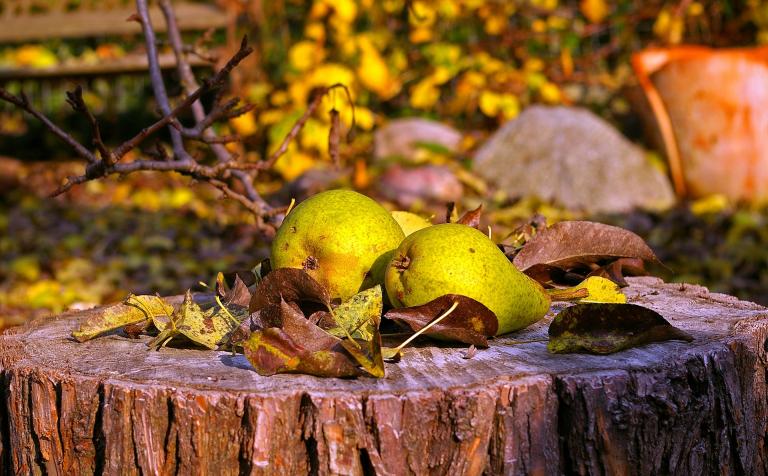
Sheila asks: “How were you introduced to your path?”
My answer: My current path, such as it is, is an amalgam I developed over the last 30 years or so of personal practice. I was raised a secular agnostic but got into paganism and witchcraft around age 11 when I started reading Cunningham, Buckland, and Leek. A few years after that I segued into Celtic Reconstructionism and American Druidism, and later began connecting to American Heathenry. The one constant through everything was the Fair Folk and witchcraft in one form or another; eventually that all solidified into my own form of Fairy Witchcraft. I draw a lot on the Fairy Faith and am now looking at early modern witchcraft.
Although I suppose I could say the absolute short answer is that in middle school one of my best friends lent me a copy of Cunningham’s ‘Wicca for the Solitary Practitioner’ and it all started there. That was when I realized that paganism and witchcraft were even options as a religion.
Lucya asks: “What book about fairies would you say should be most avoided?”
My answer: What a delightfully dangerous question. Also a difficult one to answer. I’m honestly not sure I could toss out any one particular title but I will say that I would advise people to avoid any book that suggests that fairies are entirely and completely safe, good (by any measure), and intent on helping humanity at large. While it’s a comforting belief and I can see why people would want to embrace it, it’s also contradicted not only by literally all of folklore ever but also goes against common sense in my opinion – nothing in this world is wholly safe and even most religions acknowledge the potential dangers of helpful beings like angels and Gods. I think it’s a really bad idea to center humans in everything and also to ignore all existing folklore and folk beliefs in favour of a very modern notion that all those previous experiences are wrong but the person now has some new truth which coincidentally favours the human. It’s like if someone said that everything we know about wild bears being independent apex predators is wrong and bears are actually harmless animals who want to be domesticated pets and fetch our slippers; it’s nonsensical.
So, there you go. Questions asked and answered. I hope you all enjoyed this month’s blog and seeing a bit of these subjects which I might not otherwise have gotten into. Next time I’ll return to my usual blogging style and get back to my list of topics waiting to be tackled.





